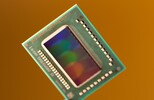Intel Core i7-2649M vs Intel Core i7-2675QM
Intel Core i7-2649M
► remove from comparisonThe Intel Core i7-2649M is power efficient LV (Low Voltage) processor for laptops. The base frequency of 2.3 GHz is relatively low, but due to Turbo Boost 2.0, the CPU may clock up to 3.2 GHz (one core loaded, 2.9 GHz with both cores loaded). However, this is depending on the cooling and power consumption of the laptop. Due to HyperThreading, the i7-2649M is able to handle 4 threads in parallel. Compared to the similar called Core i7-2620M, the 2649M is slower but also needs less power (25W versus 35W TDP).
Sandy Bridge is the evolutionary successor of the Arrandale architecture. The most noteable improvements is the improved Turbo 2.0 and the integration of the graphics card into the 32nm CPU core.
The integrated Intel HD Graphics 3000 clocked at 500 or 1100MHz (Turbo Boost). Due to the slower base clock rate, compared to HD Graphics 3000 in 35W and 45W processors (usually clocked at 650), the performance should be a bit lower.
The performance of the CPU should be a bit higher than a similar clocked Arrandale Core i7 LV. Therefore, the performance should a bit above the Core i3-390M if the Turbo can be used often.
The TDP of 25W (includes the integrated GPU and memory controller) allows the use of the 2649M CPU in thin notebooks.
Intel Core i7-2675QM
► remove from comparison
The Intel Core i7-2675QM is a fast quad core processor for laptops and successor to the popular i7-2630QM. It is based on the Sandy Bridge architecture and offers Hyperthreading to handle 8 threads at once (for a better usage of the pipeline). Compared to the 2630QM, the 2675QM offers higher base and turbo frequencies by 200MHz. Compared to the faster Core i7, the 2675QM does not feature the Trusted Execution and the VT-d functions.
Sandy Bridge is the evolutionary successor of the Arrandale architecture. The most noteable improvements are the new 265Bit AVX instructions, the improved Turbo 2.0 and the integration of the graphics card into the 32nm CPU core.
Der i7-2630QM offers an integrated graphics card (Intel HD Graphics 3000) which is clearly faster then the older Intel HD Graphics in the Arrandale CPUs. As the new GPU is included in the CPU, it is also manufactured in 32nm and shares the fast level 3 cache with the CPU cores (using a new ring bus). In the 2635QM it is clocked from 650-1200MHz (Turbo Boost). The Core i7-2630QM in comparison offers a lower Turbo Boost frequency of 1100MHz for the GPU part.
Furthermore, an improved (compared to Clarkdale) dual-channel DDR3 memory controller is included on the CPU die that is used by the CPU and GPU part.
The performance of the Core i7-2675QM should be only slightly slower than the old Core i7-2720QM that offers only a slightly higher Turbo Boost frequencies. Therefore, even demanding applications and games should run without performance problems.
The quad core CPU is still rated at 45 Watt TDP but now the integrated graphics card is also included (compared to the old Clarksfield Quad Core processors).
| Model | Intel Core i7-2649M | Intel Core i7-2675QM | ||||||||||||||||||||||||||||||||||||||||||||||||||||||||||||||||||||||||||||||||||||||||||||||||||||||||||||||||||||||||||||||||||||||||||||||||
| Codename | Sandy Bridge | Sandy Bridge | ||||||||||||||||||||||||||||||||||||||||||||||||||||||||||||||||||||||||||||||||||||||||||||||||||||||||||||||||||||||||||||||||||||||||||||||||
| Series | Intel Core i7 | Intel Core i7 | ||||||||||||||||||||||||||||||||||||||||||||||||||||||||||||||||||||||||||||||||||||||||||||||||||||||||||||||||||||||||||||||||||||||||||||||||
| Series: Core i7 Sandy Bridge |
|
| ||||||||||||||||||||||||||||||||||||||||||||||||||||||||||||||||||||||||||||||||||||||||||||||||||||||||||||||||||||||||||||||||||||||||||||||||
| Clock | 2300 - 3200 MHz | 2200 - 3100 MHz | ||||||||||||||||||||||||||||||||||||||||||||||||||||||||||||||||||||||||||||||||||||||||||||||||||||||||||||||||||||||||||||||||||||||||||||||||
| L1 Cache | 128 KB | 256 KB | ||||||||||||||||||||||||||||||||||||||||||||||||||||||||||||||||||||||||||||||||||||||||||||||||||||||||||||||||||||||||||||||||||||||||||||||||
| L2 Cache | 512 KB | 1 MB | ||||||||||||||||||||||||||||||||||||||||||||||||||||||||||||||||||||||||||||||||||||||||||||||||||||||||||||||||||||||||||||||||||||||||||||||||
| L3 Cache | 4 MB | 6 MB | ||||||||||||||||||||||||||||||||||||||||||||||||||||||||||||||||||||||||||||||||||||||||||||||||||||||||||||||||||||||||||||||||||||||||||||||||
| Cores / Threads | 2 / 4 | 4 / 8 | ||||||||||||||||||||||||||||||||||||||||||||||||||||||||||||||||||||||||||||||||||||||||||||||||||||||||||||||||||||||||||||||||||||||||||||||||
| TDP | 25 Watt | 45 Watt | ||||||||||||||||||||||||||||||||||||||||||||||||||||||||||||||||||||||||||||||||||||||||||||||||||||||||||||||||||||||||||||||||||||||||||||||||
| Transistors | 624 Million | 995 Million | ||||||||||||||||||||||||||||||||||||||||||||||||||||||||||||||||||||||||||||||||||||||||||||||||||||||||||||||||||||||||||||||||||||||||||||||||
| Technology | 32 nm | 32 nm | ||||||||||||||||||||||||||||||||||||||||||||||||||||||||||||||||||||||||||||||||||||||||||||||||||||||||||||||||||||||||||||||||||||||||||||||||
| Die Size | 149 mm2 | 216 mm2 | ||||||||||||||||||||||||||||||||||||||||||||||||||||||||||||||||||||||||||||||||||||||||||||||||||||||||||||||||||||||||||||||||||||||||||||||||
| max. Temp. | 100 °C | |||||||||||||||||||||||||||||||||||||||||||||||||||||||||||||||||||||||||||||||||||||||||||||||||||||||||||||||||||||||||||||||||||||||||||||||||
| Socket | BGA1023 | BGA | ||||||||||||||||||||||||||||||||||||||||||||||||||||||||||||||||||||||||||||||||||||||||||||||||||||||||||||||||||||||||||||||||||||||||||||||||
| Features | HD Graphics 3000 500-1100MHz, integrated DDR3-1333 memory controller, Virtualization, Trusted Execution, Hyper-Threading, Turbo Boost 2.0 | HD Graphics 3000, DDR-1333 Memory Controller, HyperThreading, AVX, Quick Sync, Virtualization (VT-x) | ||||||||||||||||||||||||||||||||||||||||||||||||||||||||||||||||||||||||||||||||||||||||||||||||||||||||||||||||||||||||||||||||||||||||||||||||
| iGPU | Intel HD Graphics 3000 (500 - 1100 MHz) | Intel HD Graphics 3000 (650 - 1200 MHz) | ||||||||||||||||||||||||||||||||||||||||||||||||||||||||||||||||||||||||||||||||||||||||||||||||||||||||||||||||||||||||||||||||||||||||||||||||
| Architecture | x86 | x86 | ||||||||||||||||||||||||||||||||||||||||||||||||||||||||||||||||||||||||||||||||||||||||||||||||||||||||||||||||||||||||||||||||||||||||||||||||
| Announced | ||||||||||||||||||||||||||||||||||||||||||||||||||||||||||||||||||||||||||||||||||||||||||||||||||||||||||||||||||||||||||||||||||||||||||||||||||
| Manufacturer | ark.intel.com |
Benchmarks
Average Benchmarks Intel Core i7-2675QM → 0% n=0
* Smaller numbers mean a higher performance
1 This benchmark is not used for the average calculation





